Targeting SUMOylation with an injectable nanocomposite hydrogel to optimize radiofrequency ablation therapy for hepatocellular carcinoma
- PMID: 38890737
- PMCID: PMC11184877
- DOI: 10.1186/s12951-024-02579-1
Targeting SUMOylation with an injectable nanocomposite hydrogel to optimize radiofrequency ablation therapy for hepatocellular carcinoma
Erratum in
-
Correction:Targeting SUMOylation with an injectable nanocomposite hydrogel to optimize radiofrequency ablation therapy for hepatocellular carcinoma.J Nanobiotechnology. 2024 Aug 2;22(1):462. doi: 10.1186/s12951-024-02690-3. J Nanobiotechnology. 2024. PMID: 39095907 Free PMC article. No abstract available.
Abstract
Background: Incomplete radiofrequency ablation (iRFA) in hepatocellular carcinoma (HCC) often leads to local recurrence and distant metastasis of the residual tumor. This is closely linked to the development of a tumor immunosuppressive environment (TIME). In this study, underlying mechanisms and potential therapeutic targets involved in the formation of TIME in residual tumors following iRFA were explored. Then, TAK-981-loaded nanocomposite hydrogel was constructed, and its therapeutic effects on residual tumors were investigated.
Results: This study reveals that the upregulation of small ubiquitin-like modifier 2 (Sumo2) and activated SUMOylation is intricately tied to immunosuppression in residual tumors post-iRFA. Both knockdown of Sumo2 and inhibiting SUMOylation with TAK-981 activate IFN-1 signaling in HCC cells, thereby promoting dendritic cell maturation. Herein, we propose an injectable PDLLA-PEG-PDLLA (PLEL) nanocomposite hydrogel which incorporates self-assembled TAK-981 and BSA nanoparticles for complementary localized treatment of residual tumor after iRFA. The sustained release of TAK-981 from this hydrogel curbs the expansion of residual tumors and notably stimulates the dendritic cell and cytotoxic lymphocyte-mediated antitumor immune response in residual tumors while maintaining biosafety. Furthermore, the treatment with TAK-981 nanocomposite hydrogel resulted in a widespread elevation in PD-L1 levels. Combining TAK-981 nanocomposite hydrogel with PD-L1 blockade therapy synergistically eradicates residual tumors and suppresses distant tumors.
Conclusions: These findings underscore the potential of the TAK-981-based strategy as an effective therapy to enhance RFA therapy for HCC.
Keywords: Hepatocellular carcinoma; Nanocomposite hydrogel; Radiofrequency ablation; Small ubiquitin-like modifier 2; TAK-981.
© 2024. The Author(s).
Conflict of interest statement
The authors declare that no conflict of interest exists.
Figures
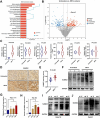
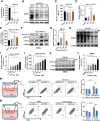
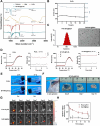
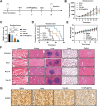
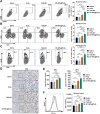
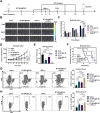
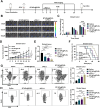
Similar articles
-
Polyoxometalate-based injectable coacervate inhibits HCC metastasis after incomplete radiofrequency ablation via scavenging ROS.J Nanobiotechnology. 2025 Jan 28;23(1):47. doi: 10.1186/s12951-024-02989-1. J Nanobiotechnology. 2025. PMID: 39871237 Free PMC article.
-
Oncolytic peptide LTX-315 plus an anti-CTLA-4 antibody induces a synergistic anti-cancer immune response in residual tumors after radiofrequency ablation of hepatocellular carcinoma.Cell Death Dis. 2025 Apr 13;16(1):288. doi: 10.1038/s41419-025-07622-z. Cell Death Dis. 2025. PMID: 40222972 Free PMC article.
-
STING agonist-based hydrogel enhances immune activation in synergy with radiofrequency ablation for hepatocellular carcinoma treatment.J Control Release. 2024 May;369:296-308. doi: 10.1016/j.jconrel.2024.01.048. Epub 2024 Mar 30. J Control Release. 2024. PMID: 38301925
-
Strategies to Improve the Antitumor Effect of Immunotherapy for Hepatocellular Carcinoma.Front Immunol. 2021 Nov 26;12:783236. doi: 10.3389/fimmu.2021.783236. eCollection 2021. Front Immunol. 2021. PMID: 34899747 Free PMC article. Review.
-
An Overview of Hepatocellular Carcinoma After Insufficient Radiofrequency Ablation.J Hepatocell Carcinoma. 2022 Apr 26;9:343-355. doi: 10.2147/JHC.S358539. eCollection 2022. J Hepatocell Carcinoma. 2022. PMID: 35502292 Free PMC article. Review.
Cited by
-
The SUMO Family: Mechanisms and Implications in Thyroid Cancer Pathogenesis and Therapy.Biomedicines. 2024 Oct 21;12(10):2408. doi: 10.3390/biomedicines12102408. Biomedicines. 2024. PMID: 39457720 Free PMC article. Review.
-
Polyoxometalate-based injectable coacervate inhibits HCC metastasis after incomplete radiofrequency ablation via scavenging ROS.J Nanobiotechnology. 2025 Jan 28;23(1):47. doi: 10.1186/s12951-024-02989-1. J Nanobiotechnology. 2025. PMID: 39871237 Free PMC article.
-
Radiofrequency ablation: mechanisms and clinical applications.MedComm (2020). 2024 Oct 2;5(10):e746. doi: 10.1002/mco2.746. eCollection 2024 Oct. MedComm (2020). 2024. PMID: 39359691 Free PMC article. Review.
-
Anti-PD-L1 blockade facilitates antitumor effects of radiofrequency ablation by improving tumor immune microenvironment in hepatocellular carcinoma.Apoptosis. 2025 Feb;30(1-2):55-68. doi: 10.1007/s10495-024-02019-3. Epub 2024 Sep 26. Apoptosis. 2025. PMID: 39327353 Free PMC article.
-
Innovative theranostic hydrogels for targeted gastrointestinal cancer treatment.J Transl Med. 2024 Oct 27;22(1):970. doi: 10.1186/s12967-024-05749-9. J Transl Med. 2024. PMID: 39465365 Free PMC article. Review.
References
MeSH terms
Substances
Grants and funding
LinkOut - more resources
Full Text Sources
Medical
Research Materials
Miscellaneous

